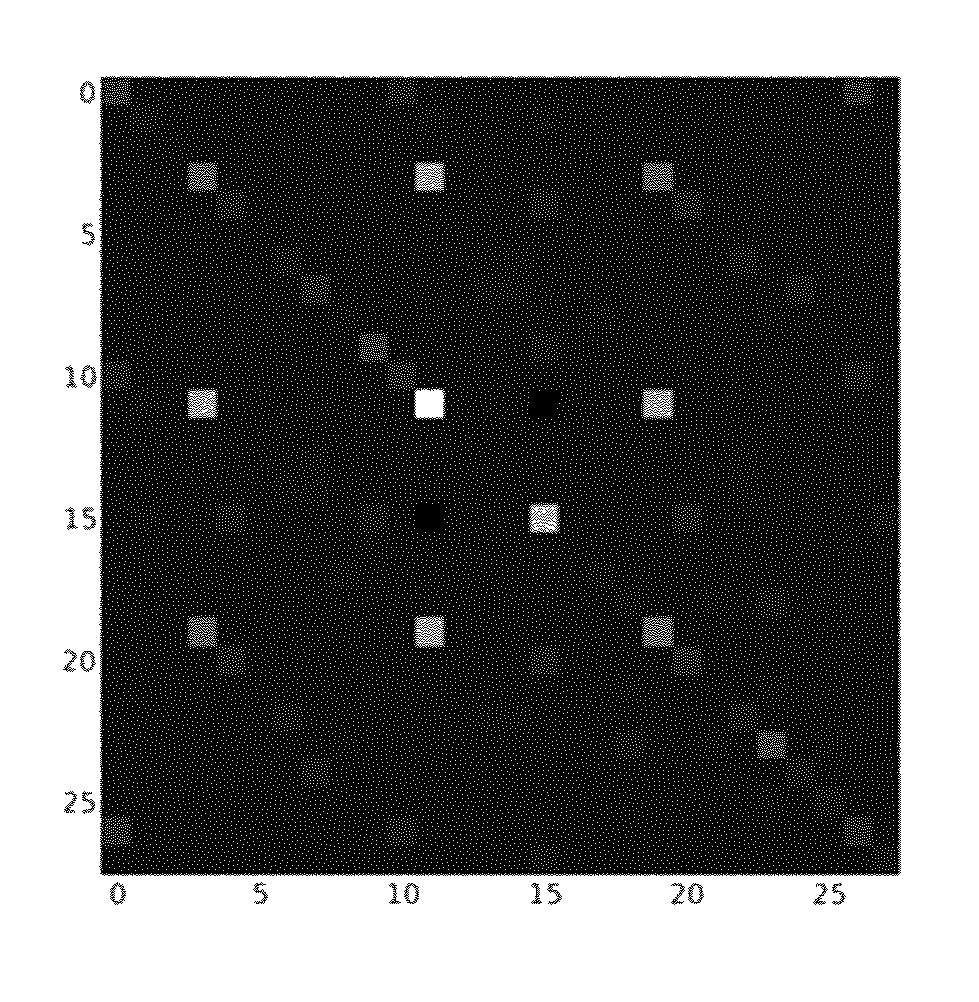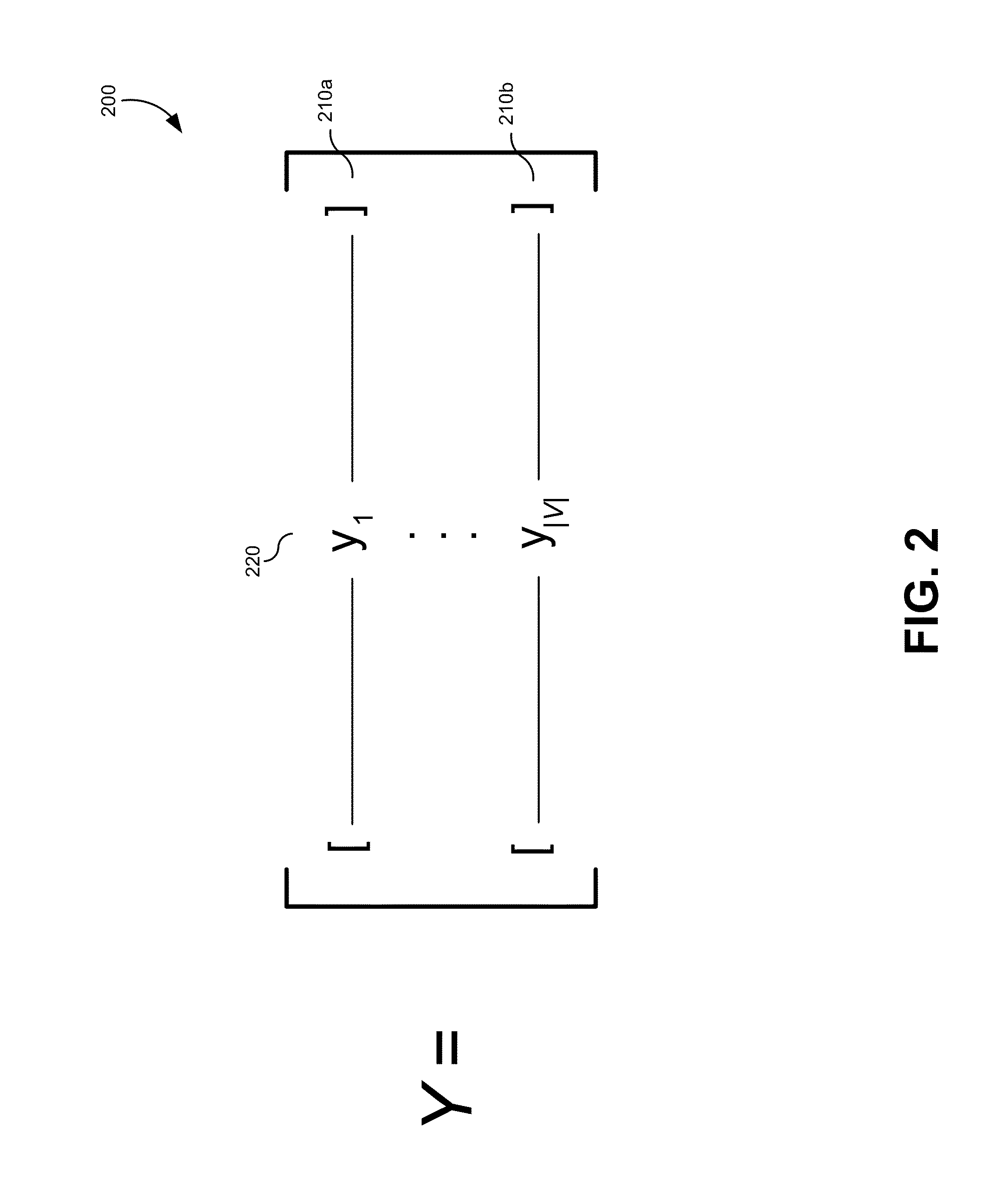Pattern detection in sensor networks
a sensor network and pattern detection technology, applied in the field of pattern detection in sensor networks, can solve problems such as uniform error tolerance assigned to each of the plurality of sensors
- Summary
- Abstract
- Description
- Claims
- Application Information
AI Technical Summary
Benefits of technology
Problems solved by technology
Method used
Image
Examples
first embodiment
[0078]Prior to this disclosure, no algorithms existed for dealing with the case of matrix decomposition with partial observations or entry-wise inequality constraints. Embodiments herein use methods to efficiently solve the cases of partial observations with noise and entry-wise inequality constraints. The method in one embodiment is based on an Augmented Lagrange Multiplier (ALM) approach that provides an iterative procedure for updating both the solution and a Lagrange multiplier. An inner loop in the iteration requires an optimization of a Lagrangian with respect to both L and S. Using the structure of the subgradients for the ∥·∥1 and ∥·∥* norms, this inner loop optimization may be performed analytically, so that the overall optimization proceeds very quickly. Using this method, decomposition of a matrix with hundreds of thousands of entries requires a few seconds to compute.
[0079]The algorithm presented here is particularly advantageous for sensor netwo...
second embodiment
[0109]It is possible to improve upon the first embodiment of the decomposition algorithm described above. In certain circumstances, a second embodiment of the decomposition algorithm described below may be faster and substantially more accurate than the first embodiment. Certain improvements can make the second embodiment of the decomposition algorithm applicable to realistic pattern detection problems that may be beyond the reach of the first embodiment described above.
[0110]In certain circumstances, the first embodiment may suffer from slow convergence for complicated error matrices E when applied to equations (20), (21), (22), and (23). For example, if a particular problem includes a uniform random error matrix ε, then the first embodiment of the decomposition algorithm can take up to 1270 iterations of the version of the eRPCA algorithm previously described to achieve a relative error in the objective of 1.58980495474e-03.
[0111]In contrast, the second em...
example application
[0175]The example application in this section provides validation of this approach to pattern detection for real sensor networks by using Abilene Internet 2 data. This example first provides some basic algorithmic tests by injecting known patterns into the Abilene data. Next the embodiments disclosed above are used to analyze the raw Abilene data to identify anomalous patterns.
[0176]The first test conducted was a “null-hypothesis” test for blank data. In particular, an important question is whether the recovery of a low-rank matrix L and sparse matrix S following an L+S decomposition using the eRPCA algorithm is truly due to a structure in the signal matrix Y as was hypothesized above, or whether the low-rank and sparse decomposition is easily and spuriously obtained for purely random data that contains no structure. In particular, there is the parameter λ in equation (14) whose optimal value is given on theoretical grounds. Beyond the regimes where the theory guarantees recovery, t...
PUM
 Login to View More
Login to View More Abstract
Description
Claims
Application Information
 Login to View More
Login to View More - R&D
- Intellectual Property
- Life Sciences
- Materials
- Tech Scout
- Unparalleled Data Quality
- Higher Quality Content
- 60% Fewer Hallucinations
Browse by: Latest US Patents, China's latest patents, Technical Efficacy Thesaurus, Application Domain, Technology Topic, Popular Technical Reports.
© 2025 PatSnap. All rights reserved.Legal|Privacy policy|Modern Slavery Act Transparency Statement|Sitemap|About US| Contact US: help@patsnap.com



